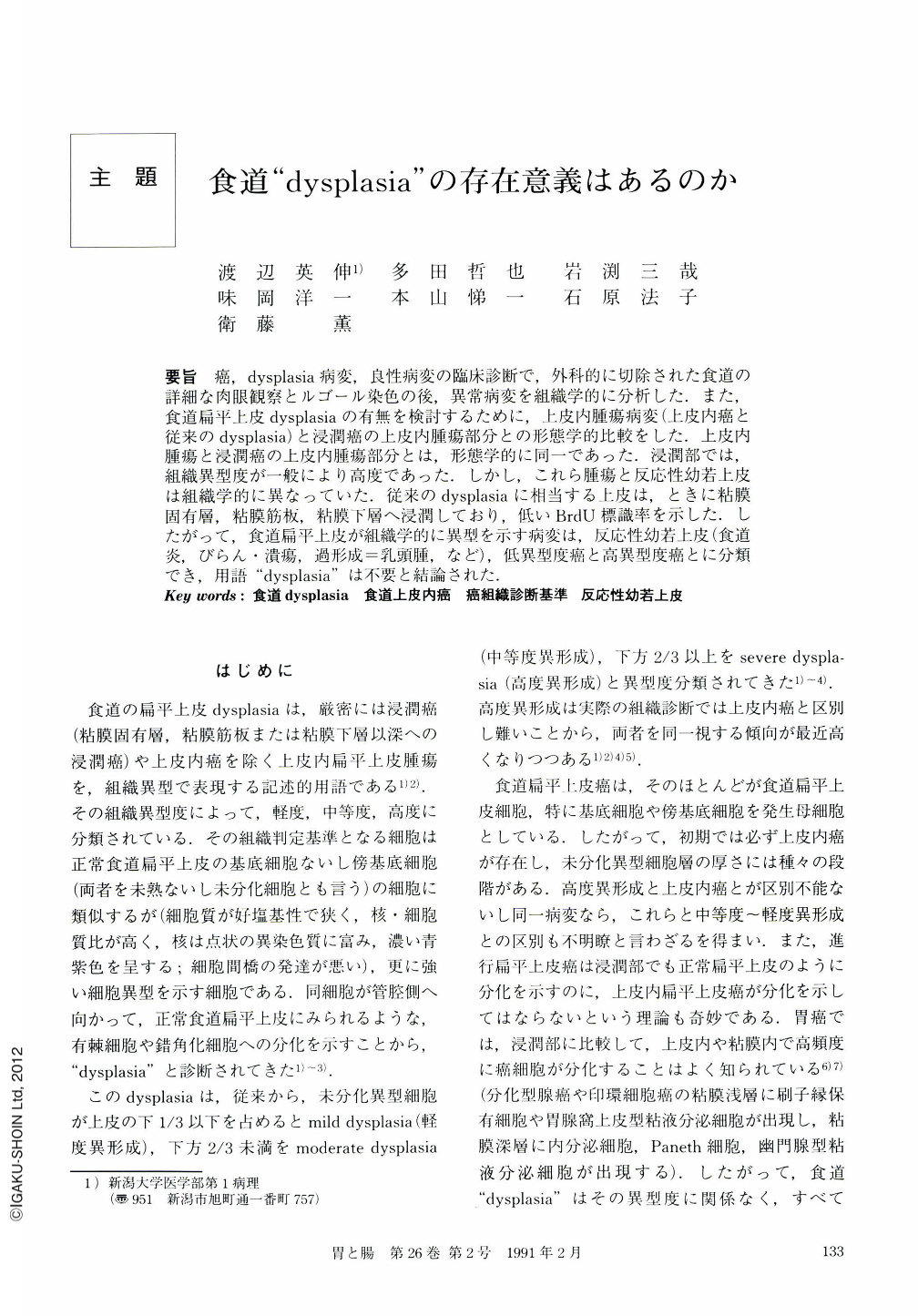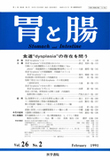Japanese
English
- 有料閲覧
- Abstract 文献概要
- 1ページ目 Look Inside
- サイト内被引用 Cited by
要旨 癌,dysplasia病変,良性病変の臨床診断で,外科的に切除された食道の詳細な肉眼観察とルゴール染色の後,異常病変を組織学的に分析した.また,食道扁平上皮dysplasiaの有無を検討するために,上皮内腫瘍病変(上皮内癌と従来のdysplasia)と浸潤癌の上皮内腫瘍部分との形態学的比較をした.上皮内腫瘍と浸潤癌の上皮内腫瘍部分とは,形態学的に同一であった.浸潤部では,組織異型度が一般により高度であった.しかし,これら腫瘍と反応性幼若上皮は組織学的に異なっていた.従来のdysplasiaに相当する上皮は,ときに粘膜固有層,粘膜筋板,粘膜下層へ浸潤しており,低いBrdU標識率を示した.したがって,食道扁平上皮が組織学的に異型を示す病変は,反応性幼若上皮(食道炎,びらん・潰瘍,過形成=乳頭腫,など),低異型度癌と高異型度癌とに分類でき,用語“dysplasia”は不要と結論された.
Surgically obtained specimens of the esophagus under the clinical and/or biopsy diagnosis of carcinoma (early or advanced), ysplasia, or benign lesion were histologically examined regarding atypical squamous cells using iodine staining method.
For the discussion of whether esophageal dysplasia really exists, histological comparisons were also made between intraepithelial neoplastic lesions (carcinoma in situ and so-called dysplasia), and intraepithelial portions of invasive carcinoma in the mucosal, submucosal or deeper layers.
There was no fundamental difference histologically between intraepithelial neoplastic lesions and intraepithelial portions of invasive carcinoma. However, there was a distinctive difference between reactive immature epithelium and neoplastic lesions (Table 2, Figs. 1-20). Invasion of the dysplastic squamous epithelium with a lower labeling index of BrdU than carcinoma in situ were sometimes seen in the lamina propria, the muscularis mucosae or the submucosa (Fig. 11).
Based on these results, it is concluded that the esophageal squamous cells are in fact classified into the following three types; reactive immature epithelium (esophagitis, erosion, ulcer, hyperplasia: squamous cell papilloma, etc), carcinoma with low-grade atypia, and carcinoma with high-grade atypia (Figs. 9-17). We propose, therefore, that the word “squamous cell dysplasia” be abandoned.

Copyright © 1991, Igaku-Shoin Ltd. All rights reserved.


